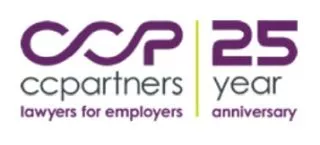A warning to Ontario employers in the health care, industrial, mining, and construction sectors - expect Occupational Health and Safety inspectors at your door anywhere from June 1, 2023 to March 31, 2024, in accordance with the Health and safety inspection compliance plans 2023–2024.
The Ministry of Labour, Immigration, Training and Skills Development (MLITSD) conducts health and safety compliance initiatives and campaigns to raise awareness of workplace hazards and promote compliance with the Occupational Health and Safety Act (OHSA) and its regulations. There is first a period of education and outreach, followed by a period of focused inspections. The MLITSD announces these campaigns and initiatives to sectors, however, they do not identify individual workplaces in advance of conducting the inspections.
During the 2023-2024 inspections, employers in the named sectors can expect OHS inspectors to focus on the following hazards, issues or topics:
Health care sector:
- The hazard of musculoskeletal disorder and its causes in health care and community care workplaces.
- 71% of the businesses selected for this campaign are small businesses (with less than 50 workers), with the top sectors being group homes, home health care services and retirement homes.
Industrial sector:
- Material handling hazards that workers face in manufacturing and farming sectors where production occurs.
- The primary focus will be on workplaces where large or bulky materials, articles or things are lifted, carried, or moved, and puts workers at risk of being injured by their movement.
Mining sector:
- The establishment and maintenance of accredited Common Core training programs – competency based modular training programs for all mine and mining plant workers in Ontario, specific to the type of work they perform.
Construction sector:
- Focus on falls from heights in roofing and framing activities in single family residential construction, residential re-roofing and multi-family residential in urban areas.
- Activities where workers may be struck by material, vehicles or equipment.
Occupational hygiene
- Respiratory protection: ensuring workers' airborne exposure to a hazardous substance does not exceed the Occupational Exposure Limit.
- Asbestos in building structures: managing asbestos-containing materials in the workplace to prevent worker exposures.
Vulnerable workers:
- Identifying labour trafficking practices in workplaces.
- Ensuring employers are providing all workers with information, instruction and supervision in occupational health and safety.
- Focusing on groups such as young workers, temporary workers, immigrant workers, workers with disabilities, new workers, indigenous workers, older workers, and racialized workers .
The MLITSD has provided a list of resources from both the Ministry itself, and health and safety partners, to help employers keep all workers safe in the workplace. These industry-specific resources, and more information regarding compliance and inspections, can be found HERE.
If your organization needs guidance on how to remain compliant with the Occupational Health and Safety Act and its Regulations, or is concerned with an order or decision issued by an inspector, the professionals at CCPartners can provide representation, legal advice, policy implementation, and training, tailored to your unique circumstances.
Click HERE to access CCPartners' "Lawyers for Employers" podcasts on important workplace issues and developments in labour and employment law.
The content of this article is intended to provide a general guide to the subject matter. Specialist advice should be sought about your specific circumstances.

